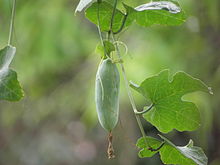What is Fish Oil?
From the term itself “fish oil” refers to oil that come from the fish. Specifically, the oil is sourced from the various tissues of oily fish. This oil is said to be a good source of omega-3 fatty acids which are known beneficial to human health. Fish oils are also said to contain DHA or docosahexaenoic acid which are touted as good anti-inflammation agents for the body.
From the term itself “fish oil” refers to oil that come from the fish. Specifically, the oil is sourced from the various tissues of oily fish. This oil is said to be a good source of omega-3 fatty acids which are known beneficial to human health. Fish oils are also said to contain DHA or docosahexaenoic acid which are touted as good anti-inflammation agents for the body.
The omega-3 fatty acid content does not actually come from the fish itself. These fatty acids are abundant in fish because of what they eat, specifically microalgae. These microalgae are the main source of food for most fishes and are the main source of omega-3 fatty acids. Other fishes also get their omega-3 fatty acids from preying on other fish that also eat microalgae. This is what explains the fact that many predatory fish like sharks and swordfishes have high quantities of this kind of fatty acid. And when the fish oil is sourced from these types of fishes, much of it will also have an abundance of health benefits.
Fish oils are extensively used as medical supplements especially for those who are suffering from hypertriglyceridemia. This is a condition in which fatty molecules are at very high levels and with the introduction of fish oil, these fatty substances may be lowered and controlled. And because of its omega-3 fatty acid content, fish oils are also touted as beneficial to the heart and blood stream. Many doctors even prescribe fish oil to help prevent heart ailments and other cardiovascular diseases.
There are also instances that fish oil is prescribed for patients that undergo depression and psychosis. Those with ADHD and Alzheimer’s disease are also said to benefit from the medical effects of fish oil. Other conditions wherein fish oil supplements may be taken include diabetes, asthma, breast pain, high blood pressure, obesity, and kidney disease among others. But before commencing any treatment with supplements containing fish oil, one must consult with licensed physicians first to get the best medical care.

